Munich High End 2023 Show Highlights
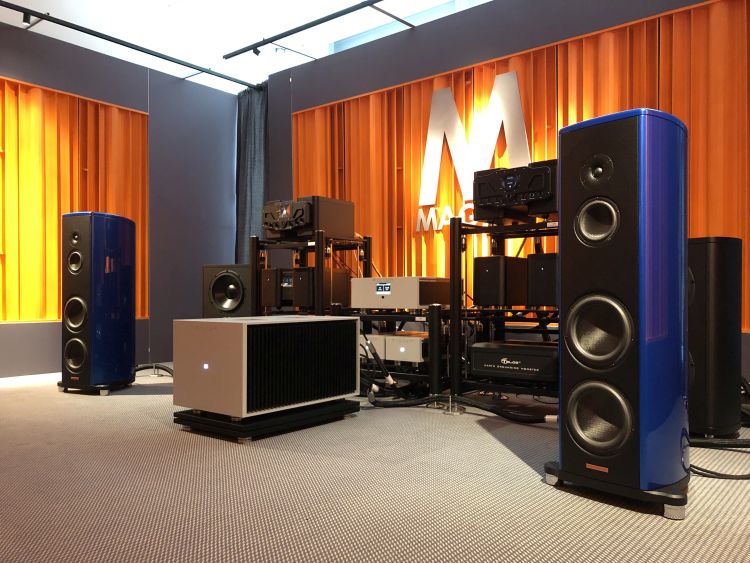
Magico M6 with Wadax and Dan D’Agostino
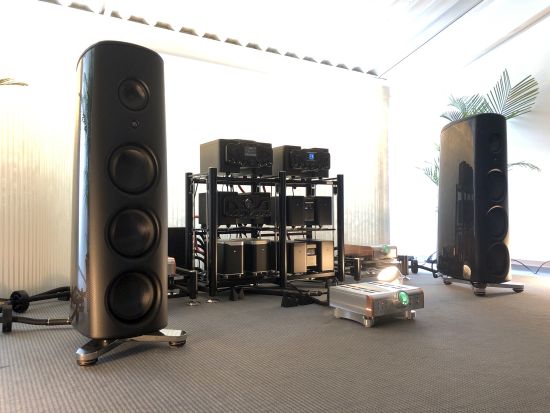
Interestingly, the Magico M6 was set up in a nearby room, accompanied by the same Wadax server and DAC as in the Magico room. The equipment was set up on a similar Artesania Exoteryc rack (although not the Special Edition) but there were no subs and Dan D’Agostino amplification was used rather than Pilium. Additionally, there was also a brand-new, highly impressive-looking, Wadax Reference CD/SACD Transport with a lens-opening reminiscent of the Sonic Frontiers Transport 3. Something tells me that, quite unlike the old Sonic Frontiers implementation, the Wadax mechanism will be whisper-quiet… In any case, even on looks alone, this beast has me drooling.
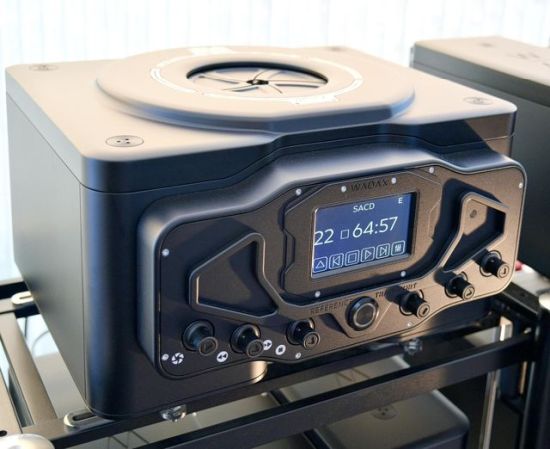
(Photo taken from SoundStage Australia’s Facebook page as I failed to take a close-up photo myself)
The room was the same size and located in the same wing of the building, presumably facing very similar conditions. As far as I can tell, this room did receive less attention than the S3 room, and of course, there were no subs here. But to some extent, I feel that I can still make at least a partial comparison.
Although the core components, placements, room size, and listening positioning were the same, the sonic presentation was very different. Whereas the S3 room was all about tightness, precision, linearity, and purity, the M6 room was much more about smoothness, richness, and refinement. The treble was not very different but the bass was incomparable. Of course, one cannot expect the same bass behavior from two different rooms, certainly not when one room is fully treated and the other only moderately so. But still, the M6 seems to be a rather rounder, sweeter, and more voluptuous and fulsome-sounding speaker than the S3. And as such, it caters to a different public. Of course, the M6 also goes deeper and is significantly more powerful so that it can play louder and fill larger rooms.
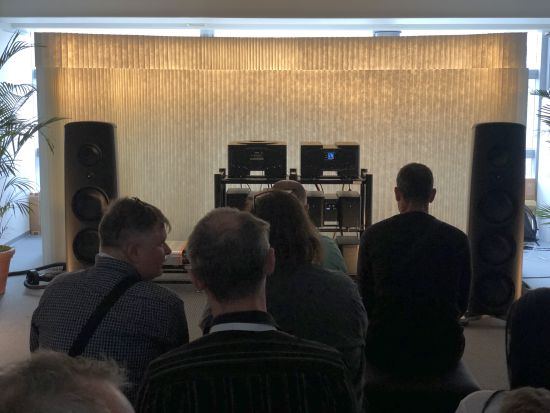
Clarisys Audio with Soulution
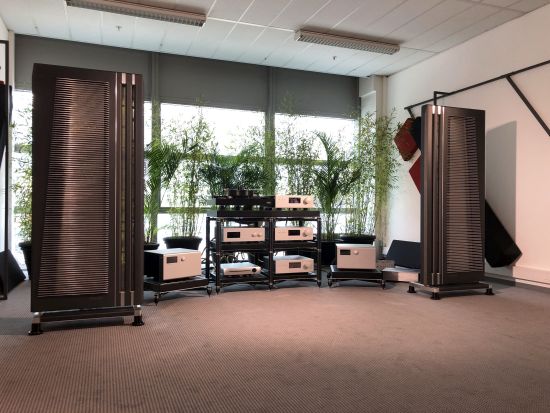
Having more than a decade of Apogee ownership in hindsight, I was interested to hear the Clarisys speakers. Designed by a global team, the speakers are manufactured in Vietnam, represented by Florian Wiegand who himself has also been an Apogee enthusiastic for a big part of his life.
Demoed here are the Clarisys Auditorium Full-Range magnetostatic ribbon speakers with a full Soulution system.
Having heard three Clarisys models in various locations, to be honest, my overall impression of them is still unbalanced. While I am convinced of the small Minuet model’s performance, I’m still divided when it comes to the large Auditorium model as heard and seen here and on one earlier occasion. I don’t think I’ve heard them playing optimally just yet.
In any case, the Auditorium sure provided remarkably deep and powerful bass with great linearity and super-low coloration, but somehow, I did not hear the same uniformity, spriteliness, organic flow, and all-out musicality of the small Minuet model as described in my show report at PUUR hifidelity. On the Saturday, the midrange could certainly be extremely expressive but on occasion to the point of biting on loud peaks in a snappish manner while the overall impression was of the panel somehow sounding somewhat restrained at the same time.
In speaking with distributor Florian Wiegand the next day, it became clear that the panels were in need of adjustment as a result of their transport and that this had been carried out between the first and second visitor days. And sure enough, when I visited again on the second day, the speakers sounded entirely well-behaved. But still, I think there’s a certain magic in the small Minuet model that I’ve not yet heard from the big ones. Based on what I heard so far, it would seem that the large models trade a portion of emotion and involvement for deeper bass and a wider dynamic range.
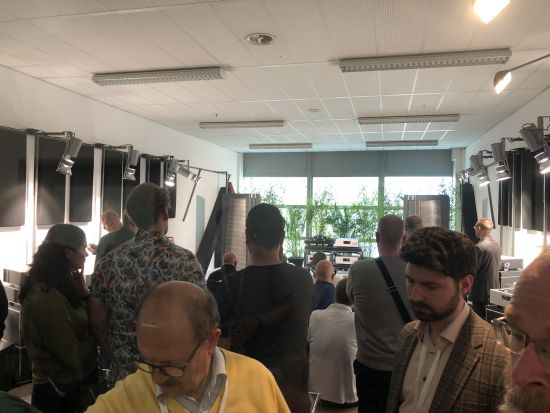
Show conditions are never great and so I can’t say very much else except that I would need to hear these speakers in a more controlled environment to properly judge them.
Nevertheless, the brand has potential and is worth checking out. Just start with the small model and work your way up. Even the Minuet has bass capabilities that seem to defy common sense. If you have the preconceived notion that dipole ribbon speakers are by design not capable of truly deep and visceral bass, then you’re in for a pleasant surprise!
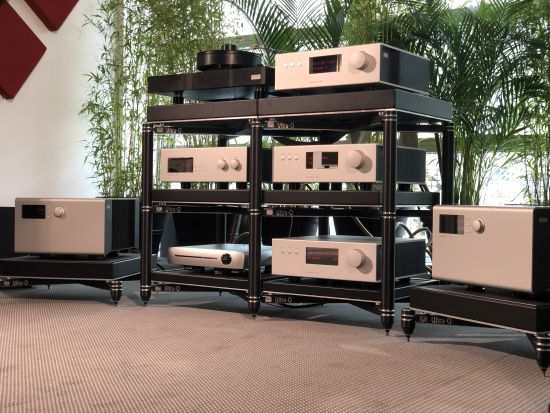
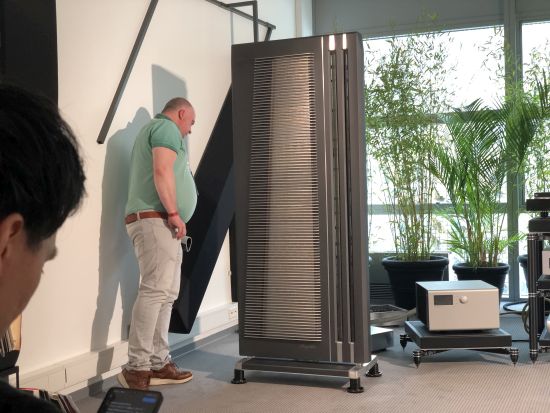
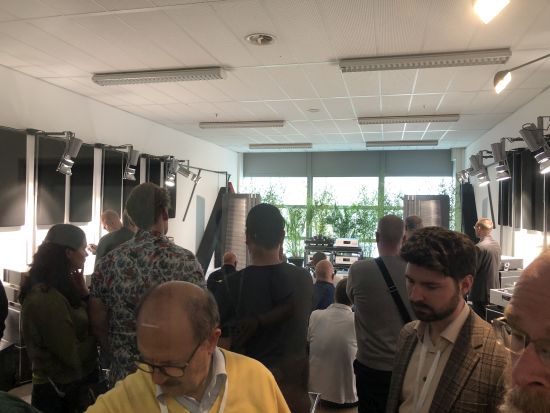
Rockport Orion with Absolare
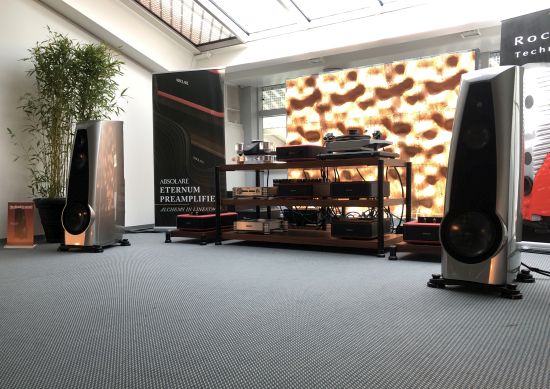
The new Rockport Orion speaker is one of the very few speakers that I felt presented serious competition for the new Magico S3. Then again it should do at around double the price for the speakers alone (not counting the Magico subs). The system was equally exalted with a full Absolare system and Hybrid Mono Power Amplifiers driving the speakers.
I imagine that the Absolare system is rather different from the clean-and-tight Wadax and Pilium system of the Magico room. I’m not actually sure if this combination is ideal for what I am personally after (articulation, transparency, resolution, and airiness) but the system as a whole sure sounded effortlessly communicative, and was fantastically dynamic and expressive, if not quite as delicate, airy, and refined as the S3 system. But there’s no doubt in my mind that there’s something special here. It’s that this brand is rarely seen in the Netherlands, but I’m holding out to hear the Orions more extensively on another occasion.
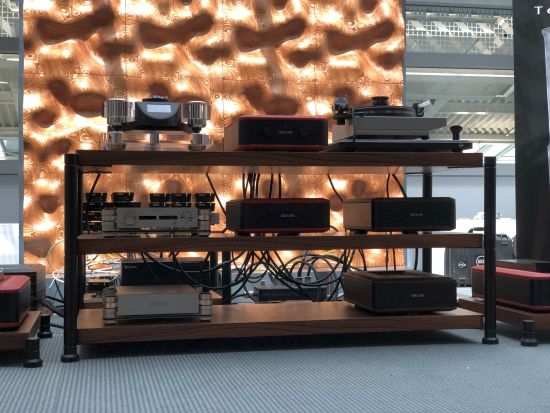
On top of the rack were a “Metronome” Kalista DreamPlay ONE CD player and an SME turntable. One level below was a Nagra DAC with a rather elaborate SOtM Streamer/DAC assembly behind it.
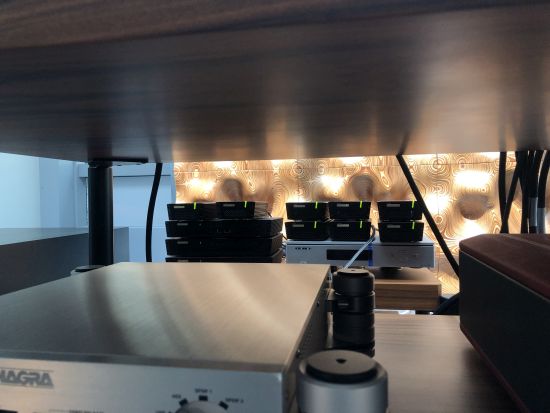
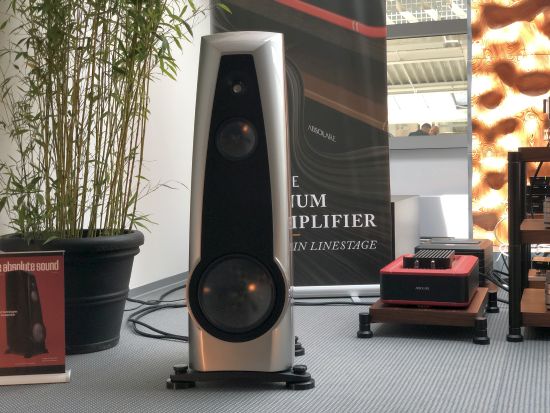
If you ask me, she’s a beauty!
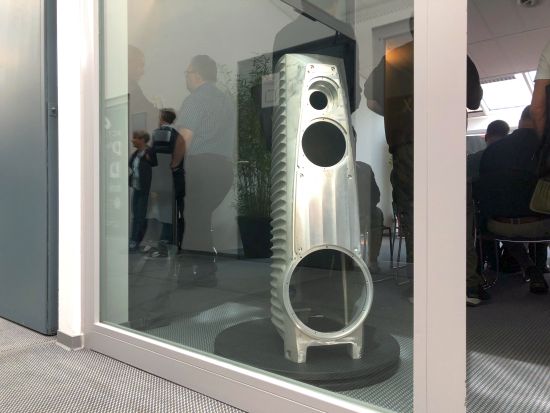
Above is the demonstration model of the Orion’s massive inner aluminum housing that in the assembled product sits inside a larger Carbon-Fiber outer housing.
Next: YG Acoustics with Burmester
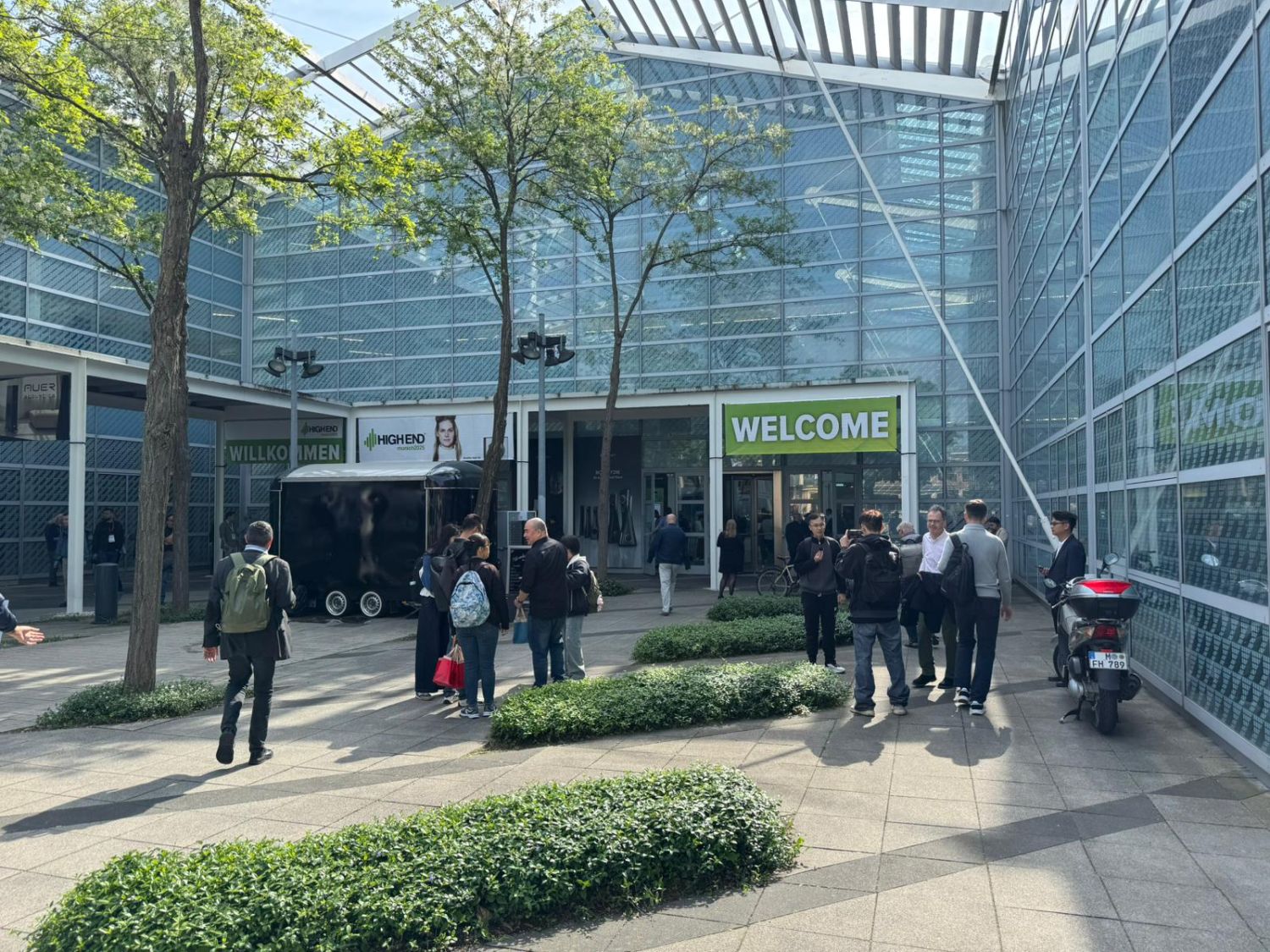
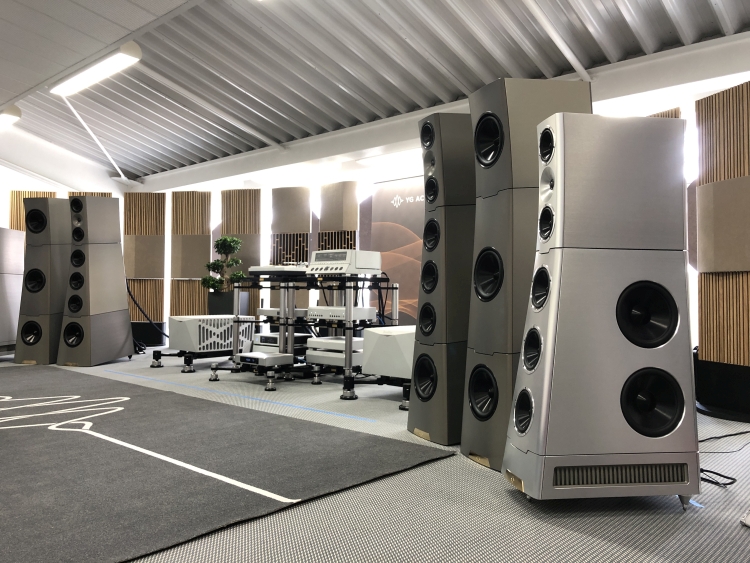



Hi Christiaan,
just read your impressions: well written as always.
The visit to the Marriott, the big Marco Serri loudspeakers… and the big electronics so “fluid” and “harmonic”… transparent, coherent, linear, open, delicate and airy and the bass was deep but agile, very precise and absolutely never overbearing (your words)…
Guess how the hall was “prepared” (wired)
😉
Keep it up!
Thanks, Luca:-) I have not noticed the cable brand(s) in the Marco Serri system, but I’m now thinking maybe it was Faber’s cable?
Hi all, we confirm the wiring and setup were by Faber’s Cables, which we publicly thank for their contribution
Marco Serri Design
You win!
:))
Without wanting to do “free propaganda” here, as you could hear and despite the “massive” speakers and a complex system, in a hotel room that was not perfectly “adequate”, the sound was “graceful”, especially the digital one.
Better than a thousand words (practically “blindly”), you tried what I told you about the ground connection, the masses and so on.
Ask me more… “privately”…
😉
Thank you
Hi Christiaan,
I really enjoy reading your HFA commentary. You have a talent for making complex topics easy to understand and a real gift for describing in language something as indescribable as music.
In your recent show report about the Taiko/Alsyvox room you wrote, “But I’ll add that no one will ever mistake them for, say, Wilson Audio speakers. These are just very different breeds.”
Would you care to expand on this? I’ve never heard the Alsyvox speakers though in the past and very distant past I’ve owned Magnaplanar planar magnetics and Acoustat electrostatics. I do however own Wilson Alexx speakers, so I’m familiar with Darryl Wilson’s sound (I have to say, I was never in love with his father Dave’s designs’ sound signature). To triangulate further with what else I’m familiar with in the high-end, prior to the Alexx I lived with Sonus Faber Aidas for some years.
Thanks very much,
Steve Z
Hi Steve, thanks for the kind words!
I’ve taken Wilson as an example as they are a well-known and iconic brand and because in my mind, they are in many ways diametrically opposed to the typical dipole magnetostatic ribbon panel sound.
Speaking from experience having owned Wilson WP8 and having heard other older, newer, and current Wilsons in various places in the Netherlands, I find that these speakers tend to sound rather fulsome in the bass, especially the upper bass. This is true in relatively large (for Dutch terms) spaces and usually more so in smaller spaces. In part this may be by design, but it might also partially be a result of the speakers being developed primarily for American residences which tend to be large and constructed in large part from wood and drywall. In the Netherlands, these speakers are used in relatively small rooms with concrete floors and walls which often create rather serious room modes that are hard to address, especially when using Wilsons. This can lead to a relatively bombastic sound that I know many people actually enjoy and might perceive as natural. I will gladly admit that there is indeed a very nice “live” aspect to the Wilson sound that I quite enjoy.
Naturally, it’s of course not just Wilson that can interact quite strongly with room modes but basically all dynamic speakers and predominantly the ported ones. What also made me use Wilson as an example is that after enjoying Magnepan, Apogee, and Martin Logan speakers with no issues, I was sadly unable to get my Wilsons to sound linear in my inherently imperfect room, which made me move on to closed cabinet speakers, currently Magicos, which work much better in my then-rather challenged environment.
So, how does this relate to magnetostatic ribbon speakers? Well, due to their dipole in-phase/out-of-phase nature and figure-of-8-radiation pattern, speakers of this kind tend to agitate room modes very significantly less so. So much so, in fact, that one could be entirely unaware of existing acoustical issues in a given room, when using Magnepan, Apogee, Diptyque, Analysis, or indeed Alsyvox speakers.
If one is not accustomed to the sound of truly clean bass, hearing it for the first time from a speaker like the aforementioned dipoles may lead one to believe the sound is lean, thin, lacking body, or tonality. While some of the aforementioned brands could objectively indeed be regarded to sound less full-bodied, robust, and tonally saturated as the average well-designed dynamic speaker, I can’t accuse Alsyvox of any of this. To me, they sound very realistic and actually achieve a balance that is as close to neutral as I have heard it from a speaker. To a large extent, you can think of ribbon speakers as listening to headphones. There will be deep, articulate, precise bass, and it can even be rather powerful, but it won’t be the same as from a big dynamic speaker. Now image that “ideal” headphone sound and extrapolate it to coming from a speaker, but with greater dynamic impact. That’s how I would describe the Alsyvox speakers.
Ultimately, though, and this is the point of the comparison that I was making in the show report, I would propose that none of the panel speakers mentioned will sound quite as voluptuous, gut-wrenching, and full-bodied as a Wilson, even when the latter is setup in an ideal room. In the end, it is to some extent a relative matter and that’s what I was trying to convey.
Thanks very much for taking the time, Christiaan. Very helpful, as always!
Great commentary as usual, it’s interesting what you say about the new Magico’s S3’s having heard a variety of Magicos over the years i find them a bit cold in places. Obviously amplification plays a big role in this but will be interesting to hear what they are like in a ones listening space. I sadly didn’t get into this room too much to see in one day. Agree on the Wilsons, impressive in a big space, but more cut out for the US market.
Did you get to the TIDAL room? that was best for me that i heard all day, especially the Tidal for Bugatti. Different level in my book to most things there, first time on hearing this. Not sure about the totally polished cabinets but the sound was amazing.
keep up the good work! love reading the reviews.
Miami
Hi Miami, The assessment of the quality/beauty/realism of sound reproduction really is quite personal. I believe that since hifi is inherently never a perfect representation of reality, we as individuals choose which aspects of the sound reprodution we associate with being appealing or sounding realistic. To me, these may be a different set of aspects than to you, or someone else. I know that there are people who find Magicos to sound relatively cold. To a large extent, I think this is based on listening to Q-series models which are indeed incredibly revealing and can be fussy. I would not label S-series and M-series Magicos as cold, but I know that there are people who still hear them as such. The new S3 sounds to me like a hybrid between the S-series, Q-series, and M-series. It has exrtremely low coloration and distortion, and as demonstrated in Munich this year, the speaker can sound remarkably clean and coherent. To an extent, this is also the result of cleverly used subs and considerably more ideal room conditions than normal. But what I found particularly compelling was that there was never any edge or hardness and the speakers managed to sound fast and accurate as well as gentle and refined. Ultimately, the assessment of what constitutes great sound is in the ears of the beholder and it remains a matter of perspective and of personal preference. The variety of preferences and methods of reproduction, and the quest for finding the ever more ideal balance, is what keeps it interesting:-) Alas, the Bugatti was not playing when I visited the Tidal room.